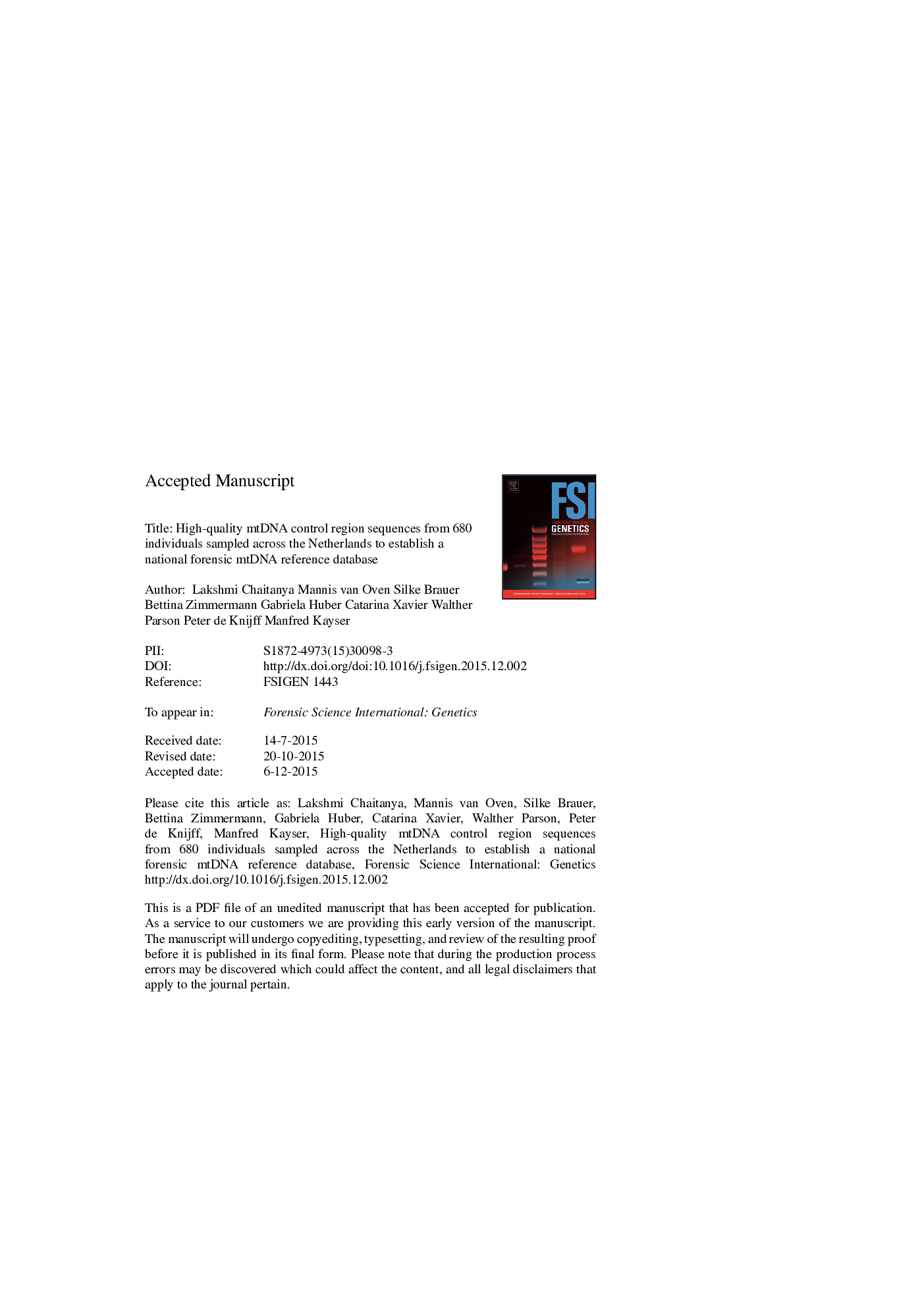| Article ID | Journal | Published Year | Pages | File Type |
|---|---|---|---|---|
| 6553630 | Forensic Science International: Genetics | 2016 | 36 Pages |
Abstract
The use of mitochondrial DNA (mtDNA) for maternal lineage identification often marks the last resort when investigating forensic and missing-person cases involving highly degraded biological materials. As with all comparative DNA testing, a match between evidence and reference sample requires a statistical interpretation, for which high-quality mtDNA population frequency data are crucial. Here, we determined, under high quality standards, the complete mtDNA control-region sequences of 680 individuals from across the Netherlands sampled at 54 sites, covering the entire country with 10 geographic sub-regions. The complete mtDNA control region (nucleotide positions 16,024-16,569 and 1-576) was amplified with two PCR primers and sequenced with ten different sequencing primers using the EMPOP protocol. Haplotype diversity of the entire sample set was very high at 99.63% and, accordingly, the random-match probability was 0.37%. No population substructure within the Netherlands was detected with our dataset. Phylogenetic analyses were performed to determine mtDNA haplogroups. Inclusion of these high-quality data in the EMPOP database (accession number: EMP00666) will improve its overall data content and geographic coverage in the interest of all EMPOP users worldwide. Moreover, this dataset will serve as (the start of) a national reference database for mtDNA applications in forensic and missing person casework in the Netherlands.
Related Topics
Life Sciences
Biochemistry, Genetics and Molecular Biology
Genetics
Authors
Lakshmi Chaitanya, Mannis van Oven, Silke Brauer, Bettina Zimmermann, Gabriela Huber, Catarina Xavier, Walther Parson, Peter de Knijff, Manfred Kayser,
